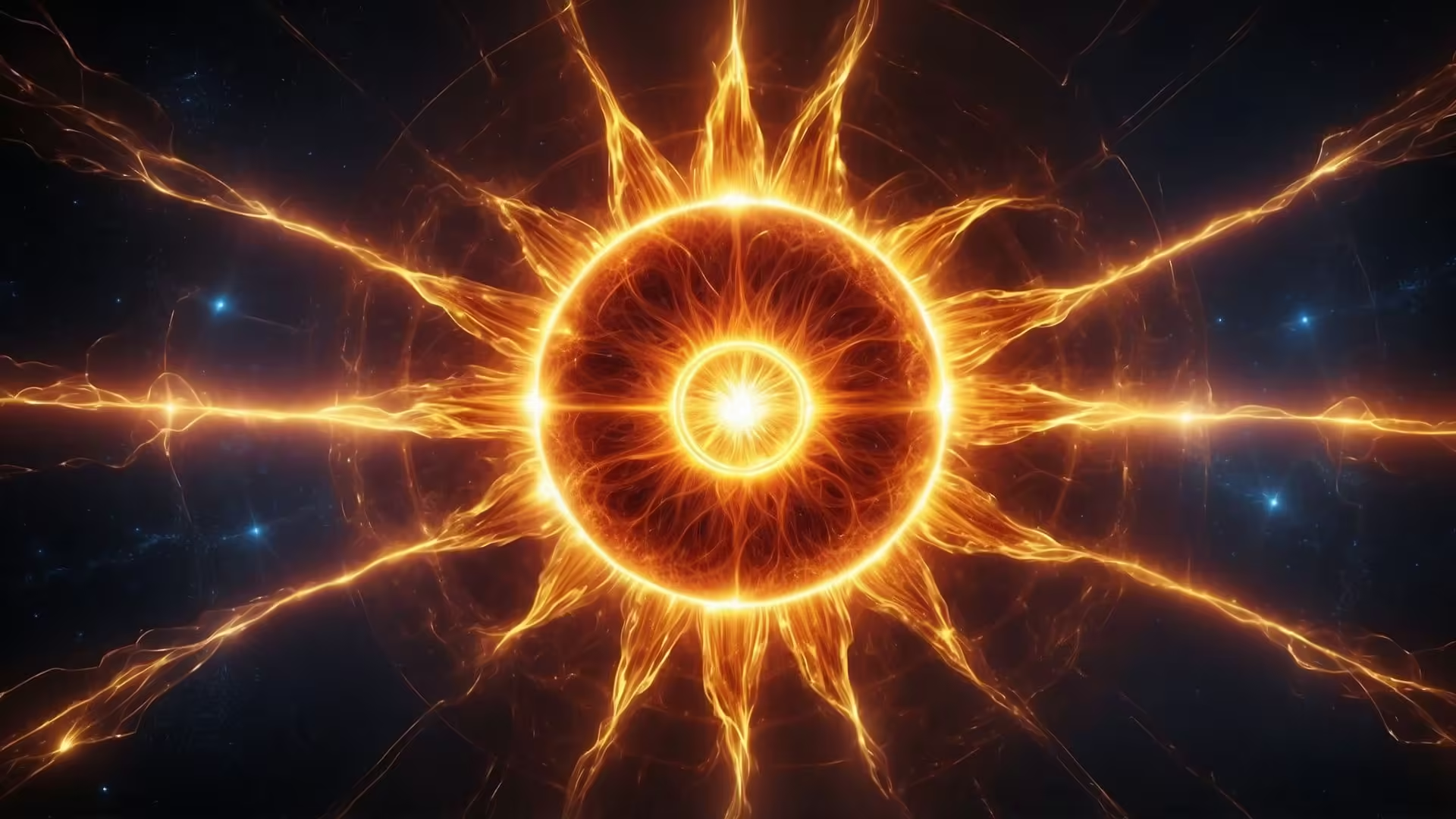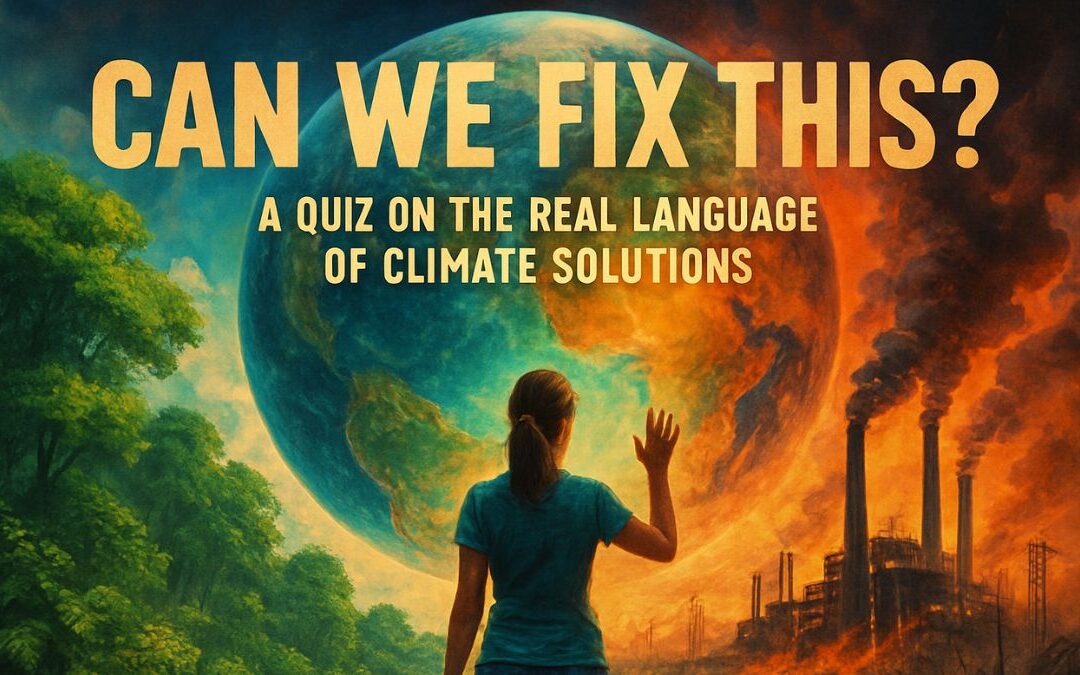- The Gist
- Nuclear Fusion: The Power of the Sun
- How Does Nuclear Fusion Work?
- Why Is Fusion So Promising?
- The Science Behind Fusion Reactors
- The Challenges of Achieving Nuclear Fusion
- Fusion Milestones and Recent Breakthroughs
- What Could Fusion Mean for Our Future?
- Nuclear Fusion—A Bright Future for Clean Energy
- Let’s Talk
- Let’s Learn Vocabulary in Context
The Gist
Imagine a world where energy is abundant, clean, and powerful enough to meet humanity’s needs without polluting the planet. This is the promise of nuclear fusion, the very process that fuels the sun’s incredible energy. Unlike the current nuclear power we know, which relies on splitting atoms, nuclear fusion combines them to release massive amounts of energy. Scientists are working to recreate this reaction here on Earth, hoping it will be the breakthrough energy source of the future. That’s just the gist of what this post is about. If you want to dig deeper into the topic, some discussions about it, and learn some key vocabulary from its context, read the post.
Nuclear Fusion: The Power of the Sun
Nuclear fusion is the process that powers the sun, making it the most powerful energy source in our solar system. It’s a natural reaction that occurs when two light atomic nuclei combine to form a single, heavier nucleus, releasing a tremendous amount of energy in the process. This is the opposite of nuclear fission, the reaction used in current nuclear power plants, which involves splitting atoms rather than combining them. Fusion holds immense promise because it can produce vast amounts of clean, virtually limitless energy without the dangerous waste associated with fission.
How Does Nuclear Fusion Work?
To understand nuclear fusion, let’s take a closer look at what happens in the sun. The sun is made mostly of hydrogen atoms that are under intense heat and pressure at its core. These extreme conditions cause hydrogen nuclei to collide with such force that they overcome their natural repulsion and fuse together, forming helium and releasing energy in the process. This energy travels to the sun’s surface and radiates into space as heat and light—the same energy that powers life on Earth.
Recreating fusion on Earth involves trying to mimic these conditions of extreme heat and pressure. Scientists are experimenting with powerful reactors that can reach temperatures hotter than the sun’s core, over 100 million degrees Celsius. At this temperature, hydrogen gas becomes a superheated plasma, allowing the hydrogen atoms to collide and fuse, creating a burst of energy. The challenge is maintaining these conditions long enough to produce sustained energy, which requires advanced technology and precise control.
Why Is Fusion So Promising?
Fusion offers several advantages that make it an attractive alternative to traditional fossil fuels and nuclear fission:
- Virtually Unlimited Fuel: Fusion relies on hydrogen, one of the most abundant elements in the universe. We can extract hydrogen from water, making it a nearly limitless fuel source. In contrast, fossil fuels and uranium (used in fission) are finite and can be costly to obtain.
- No Greenhouse Gases: Unlike burning fossil fuels, nuclear fusion does not produce carbon dioxide or other greenhouse gases, making it a clean energy source that could help combat climate change.
- Minimal Radioactive Waste: Fusion produces only small amounts of radioactive material, which is short-lived compared to the long-lasting waste from fission. This waste is easier to manage and does not require long-term storage solutions like current nuclear waste.
- No Risk of Meltdown: Fusion is inherently safe because it requires precise conditions to maintain. If there’s a disruption, the reaction stops naturally. This eliminates the risk of a runaway reaction or meltdown, which can occur in fission reactors.
The Science Behind Fusion Reactors
Scientists are developing several types of fusion reactors, each with unique methods for achieving the extreme conditions necessary for fusion. Here are two of the most common approaches:
- Tokamak Reactors: The tokamak is a doughnut-shaped reactor that uses powerful magnetic fields to contain and control superheated plasma. The magnetic fields keep the plasma from touching the walls of the reactor, preventing it from cooling down and allowing the fusion reaction to continue.
- Laser-Based Reactors: Another method uses high-powered lasers to heat and compress hydrogen pellets to achieve fusion conditions. Known as inertial confinement fusion, this approach involves firing lasers at a tiny target, causing it to implode and create the necessary pressure and temperature for fusion.
Both methods are still in experimental stages, but they show promise as scientists work toward achieving sustainable fusion.
The Challenges of Achieving Nuclear Fusion
Despite its promise, achieving nuclear fusion on Earth is no easy task. Here are some of the main challenges scientists face:
- Extreme Conditions: Creating the heat and pressure needed for fusion requires highly advanced technology. Temperatures in fusion reactors must exceed 100 million degrees Celsius, which is hotter than the core of the sun.
- Energy Input vs. Output: For fusion to be viable as an energy source, reactors must produce more energy than they consume. Currently, fusion reactors require massive amounts of energy to initiate and maintain the reaction, and achieving “net energy gain” has been difficult.
- Cost and Infrastructure: Building and maintaining fusion reactors is extremely costly. Fusion research requires significant investment, and the technology is complex, meaning it could take decades before fusion power is available on a large scale.
Fusion Milestones and Recent Breakthroughs
While fusion energy remains a goal for the future, scientists have made significant progress in recent years. In 2022, researchers achieved a fusion reaction that produced more energy than it consumed—a major milestone in fusion research. While this experiment was on a small scale, it proved that “net energy gain” is possible, a critical step toward making fusion power commercially viable.
Another notable project is the ITER (International Thermonuclear Experimental Reactor) in France, a massive collaboration between 35 countries. ITER aims to be the first fusion reactor to produce substantial amounts of power, paving the way for future fusion plants. Scientists and engineers around the world are optimistic that these advances will bring us closer to practical fusion power in the coming decades.
What Could Fusion Mean for Our Future?
If nuclear fusion becomes a viable energy source, it could transform the way we power our world. Imagine a future where energy is abundant, affordable, and clean—where we no longer rely on fossil fuels or worry about greenhouse gas emissions. Fusion could make energy shortages a thing of the past and provide power for everything from homes and cities to advanced technologies like electric vehicles and even space exploration.
However, fusion is still a work in progress, and it may take time before it becomes a practical energy solution. But as technology advances and research continues, the possibility of harnessing the power of the sun on Earth moves closer to reality.
Nuclear Fusion—A Bright Future for Clean Energy
Nuclear fusion represents the ultimate goal in clean, sustainable energy. By mimicking the reaction that powers the sun, fusion could provide us with a nearly limitless supply of energy without the environmental downsides of fossil fuels or the risks associated with nuclear fission. While challenges remain, recent breakthroughs in fusion research suggest that a future powered by fusion energy is within reach. As scientists continue to push the boundaries of technology, we may one day see fusion become a cornerstone of global energy production, lighting up our cities and powering our world with the same energy that fuels the stars.
Let’s Talk
Isn’t it incredible to think that we’re on the brink of recreating the very same process that powers the sun right here on Earth? When you really stop to think about it, nuclear fusion sounds almost like science fiction—bringing together tiny hydrogen atoms and generating immense energy, just like stars do. It’s a reminder that sometimes the biggest answers to our modern problems come from looking up. I mean, we’ve been watching the sun rise and set forever, yet now, instead of just admiring its light, we’re trying to understand how to harness its power.
But there’s also a catch, isn’t there? As cool as fusion is, it doesn’t just happen with the flip of a switch. Scientists need to reach unimaginable temperatures—100 million degrees, hotter than the sun’s core! That’s like putting a marshmallow in a bonfire and hoping it doesn’t melt. Yet, they’re pulling it off with things like tokamaks and lasers, and each breakthrough makes it feel like we’re one step closer. Imagine, though, a world where our energy comes from a clean, virtually unlimited source. Fusion would be a game-changer. We wouldn’t have to worry about burning fossil fuels or dealing with radioactive waste that takes forever to decay. It’s like having the ultimate renewable energy source, one that’s actually safe and clean.
And here’s where it gets interesting: what could nuclear fusion mean for us on a practical level? Cheaper electricity, fewer power outages, and a much smaller carbon footprint, for starters. We’d have a reliable power source for homes, transportation, even futuristic tech that hasn’t been invented yet. You know how some inventions completely redefine society—like the internet or electricity itself? Fusion could be that next big leap. But of course, it’s going to take time, patience, and continued funding.
So, here’s a question: What do you think we’d see if fusion power finally became a reality? Would it change the way we live, work, and think about energy? And can you imagine a world where energy is so abundant that we rarely have to think about it, where it’s as reliable as turning on a light switch without worrying about the bill?
Let’s Learn Vocabulary in Context
Let’s dig into some of the key terms that bring nuclear fusion to life. First up is nuclear fusion itself. Fusion is all about combining two small atomic nuclei to make a larger one, releasing a massive amount of energy. You might hear it called “the power of the sun” because that’s how stars, like our sun, generate their energy. Fusion is the opposite of fission, which splits atoms, so keep that in mind when comparing the two.
Next, we have fission. In contrast to fusion, fission involves splitting a heavy atomic nucleus into smaller parts, releasing energy. Fission is used in today’s nuclear power plants, but it comes with risks, like long-lasting radioactive waste.
Then there’s plasma—this is a state of matter (like solid, liquid, or gas) but much hotter. In fusion, hydrogen atoms are heated until they form plasma, where the atoms can fuse. Plasma is tricky to handle, but without it, fusion wouldn’t be possible.
Tokamak is a funny-sounding word, but it’s essential to fusion research. A tokamak is a doughnut-shaped device that uses magnetic fields to keep plasma in place so it doesn’t touch the reactor’s walls. Think of it as a futuristic pot holding superheated soup without letting it spill over.
Inertial confinement is another approach to achieving fusion, using lasers to compress and heat hydrogen fuel until it fuses. It’s an intense process but shows another way scientists are working toward fusion.
The term clean energy is huge in this context. Fusion is considered clean because it doesn’t produce harmful greenhouse gases or long-lasting radioactive waste. So when we say fusion could be a clean energy source, we’re talking about something that doesn’t harm the environment or contribute to climate change.
Another critical term is net energy gain. This is when a fusion reactor produces more energy than it consumes. For fusion to be practical, reactors must reach net energy gain, which is why recent breakthroughs in achieving this are so exciting.
Sustainable is another word you’ll see often. Sustainability is all about creating resources that can last without depleting or harming the planet. Fusion, with its unlimited fuel source (hydrogen), has the potential to be the ultimate sustainable energy source.
The International Thermonuclear Experimental Reactor (ITER) in France is one of the biggest fusion projects in the world. ITER brings together scientists from multiple countries to test fusion technology on a large scale. It’s a massive collaboration with the goal of achieving sustained fusion power.
Lastly, there’s carbon footprint. This refers to the total greenhouse gases each person, business, or technology produces. Fusion could drastically reduce our carbon footprint by providing energy without emissions, making it crucial in the fight against climate change.
So, here’s a thought: which of these terms do you think is the most exciting? And if you could choose, would you be more interested in working with tokamaks or laser-based reactors? The world of fusion is just getting started, and these words might just become part of our everyday conversations one day!










0 Comments